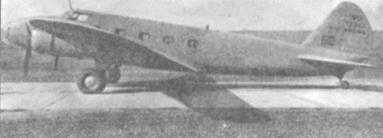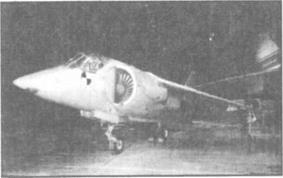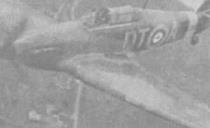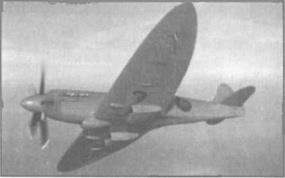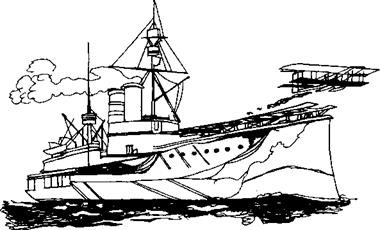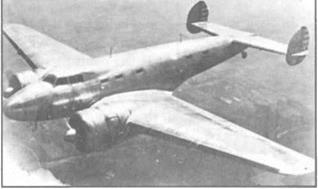SECOND WORLD WAR AND AFTER
The First World War ended, but not man’s interest in aviation. Britain, France and the United States continued investment in the field. Aircraft held the key to faster mode of travel and transport. The prime need was to improve on speed and design, comfort and safety. Industrial houses realised the commercial possibility. They provided financial backing to engineers and designers and researchers. The experts came up with ideas and projects aimed at further development of new aircraft. All of them displayed abiding interest in taking aviation to great heights.
Civil aviation began with cargo transport and mail. Then it got on to transporting people. The designs of aircraft changed rapidly. Aircraft gained smart new look. They were sleek, better shaped to fly faster and smoother. Introduction of coolant instead of water and in-line cylinders led to leaner snouts. This meant considerable reduction in the drag.
In the United States, three companies, Douglas, Lockheed and Boeing, came up with new designs. Boeing 247 (Fig. 9.1) had Tow wings, twin engines’ and was shaped elegantly to reduce air resistance. It took off on its maiden flight, with ten passengers on board, on 8 February 1933. It flew at a speed of 240 kmph. On 17 December 1935, the DC 3, produced by Douglas (known to us as the Dakota) carried 21 passengers and cruised at a speed of 290 kmph.
Britain and France too developed commercial aircraft.
|
Fig. 9.1: Boeing 247 |
The designs underwent sea change. New material, new designs and new fuels were tested. Those that stood the test were incorporated into the next lot of aircraft. Wooden spars and fabric covering and wire bracing gave way to thin metal sheeting, stretched over frames suitably shaped to reduce air resistance. The quest for greater speed led to the clean, more streamlined monoplane. These planes proved their superiority, winning the Schneider Trophy Races (these were open to all nations), in 1927, 1929 and 1931.
The search for greater speed and efficiency continued. The piston engine limited the speed of rotation of the propellers. A new form of propulsion had to be found. It took the seekers time to remember a basic law, defined by Sir Isaac Newton. He had asserted that action and reaction are equal and opposite.
This is demonstrated easily. Blow into a balloon till its swells up. Hold the air in by pressing the mouth with the fingers. Take the fingers off, quickly. The balloon flies backward, taking a zigzag path.
Frederich Stamer and Fritz von Opel (both of Germany) and Frank Whittle of England saw the cue that Newton’s law held, almost at the same time. They developed the turbojet engine. Air entered the engine through the air intake. It
was compressed, before fuel was injected and burnt to produce hot gases. These gases worked the compressor and then rushed out, providing the thrust for the aircraft.
Experiments with the internal combustion gas turbine showed that the speed of rotation to the blades of the turbine increased manifold. However, the design churned up a new problem. The high speed of rotation resulted in very fast overheating. The available metal frames could not stand this heat. That problem demanded more study. Nobody showed the will or the confidence to undertake this study. The potential of the turbine engine was not readily accepted. So further work on this idea did not gain priority. Not till the Second World War broke out in 1939!
At the end of the First World War, in 1919, a Peace Treaty was signed. The defeated nations were barred from working on military aircraft. So said the Treaty. No treaty remains valid forever. Not the Treaty of 1919 either. It ended with the rise of Nazism in Germany. Hitler came to power, presenting a new agenda. He wanted to make Germany a Super Power. For that he needed a modern defence force.
In 1934, he started rebuilding the nation’s military capability. The Air Force, the Luftwaffe, was modernised. New aircraft with advance techniques like the Dornier and the
|
|
|
Fig. 9.3: The Hurricane |
Condor were developed. In 1935, Hitler told the world that he had built up modern aircraft with immense speed and range. He proved his point in 1938. The Condor, with 26 passengers on board, made a record breaking round trip to New York and back.
Germany modernised its Air Force. It produced JU 52, suitable for bombing missions. Then came the BF 109, Germany’s fighter aircraft. It was the best among piston-engine fighter planes. Britain came up with the Hawker, the Hurricanes and the Spitfire to counter the danger (Figs. 9.2 to 9.4). The US developed the Hawk 75 and then the P-36 and P-40 fighters.
|
|
Both sides watched, with bated breath, the gathering war clouds.
In 1938, Hitler quietly added Austria to his Empire. Czechoslovakia was his next target. Both Britain and France protested. Hitler decided to go slow and lulled the fears of Britain and France with false assurances. The Munich Pact was signed. It assured the sovereignty of Czechoslovakia. But this proved to be a brief reprieve. It only deferred the take over of Czechoslovakia by a few months.
Finally, on 1 September 1939, the Germans started a Blitzkrieg (Lightning War) on Poland. The German air power proved deadly. Within three weeks, Poland surrendered. Hitler’s forces targeted Belgium, Holland, Norway, Denmark and then France.
Britain was next in the line of fire. However, the nation was not totally unprepared. It replaced Chamberlain with Winston Churchill. He was the man to lead the nation in the crisis. He surveyed the Air strength, released funds to produce modern fighter aircraft and bombers and invited companies with the skill and expertise to help the war efforts.
Initial advantage in air battles lay with Germany. The Royal Air Force suffered heavy loss of men and aircraft in daylight attacks on enemy warships or on military establishments. Germans shot down the outdated aircraft before they could complete their missions.
Britain felt the heat in the autumn of 1940. German fighters and dive-bombers swarmed in hordes, targeted even the civil population. Thousands died or received severe burns and wounds. Churchill breathed strength into the nation, declared that thd nation would defend itself to the very last.
This was no rhetoric. The people backed their leader to the hilt. Manufacture of fighters and bombers became paramount. Thousands of young men enlisted in the Air Force.
Many women worked at the assembly lines. Their efforts thwarted Germany’s hope of an early victory. But the War was far from over.
The entry of aircraft carriers marked the next stage of aerial war. (Aircraft carriers are ships with huge runways on the deck. They also have room to house fighters and bombers. The ships sail close to the terrain or target on land chosen for attack, put in anchor at a safe distance from the shore. The aircraft take off from the deck, carry out the assigned task and return to the carrier. The aircraft fly minimal distance. So they escape early detection by the enemy. Selection of targets for attack becomes easier. That increases the margin of safety and also the success rate of the air strike (Fig. 9.5).) The Allies inducted aircraft carriers in a big way. German submarines swung in to check them before they got into position to launch attacks. The British Navy succeeded, on most occasions, to detect and destroy the U-boats. In this battle on the seas, the hunter often became the hunted.
|
|
The tide changed when Japan sent its bombers to destroy US ships at Pearl Harbour, on 7 December 1941. That drew the US into the War. US Air Force planes hit the enemy in the West and the East by unleashing its air power. Factories in the US worked, round the clock, to turn out aircraft with marked superiority. The P-51 Mustang fighters were more dexterous and manoeuvrable, while engaged in air battles. B-17 bombers could fly, at high speed, into enemy territory and drop around 2750 kg of incendiaries and explosives. B-29 and the Grumman F6F Hellcat too were inducted into the war. They were sleek and fast. They managed to duck and dodge the enemy interceptors and complete their missions.
Germany reeled under the concerted assault. However, Hitler’s hopes revived with the development of the successful testing of the world’s first operational jet aircraft, the Meserschmitt (Me-262). That was the last flicker of Germany’s fortune. The Allies pressed forward. They closed in on Berlin. Germany surrendered. Hitler chose to take his own life.
The Air Force had played a major role in the final victory. Churchill complimented the men: "Never in the field of human conflict was so much owed by so many to so few".
After the end of the War, old warplanes were retrieved for civil use. But interest in the development of military aircraft did not weaken. The emergence of the Soviet Union as a Super Power made it imperative for the Americans to be in the race. This confrontation, known as the Cold War, continued till the collapse of the Soviet Union.
Many German scientists and engineers moved to the United States and to the Soviet Union. Their services took aviation to great heights.
Armament industry received a big boost. It became the key to economic development too. MIG-15 of the Soviet
|
Fig. 9.6: The Lockheed XC 35 |
Union and F-86 Sabre of the United States saw action in the Korean War.
In the meanwhile, the turbo jet engine proved its worth. This boosted civilian flights. In June 1947, Panam started world service with L-749 Constellation, produced by Lockheed (Fig. 9.6). Boeings too commenced civilian flights. In 1952, Britain introduced the jetliner, The Comet. Boeing 707 appeared on the scene soon after. In the 1960s, aided by computer, Boeings designed improved versions, B-727 and B-747.
Civilians with enough funds demanded small aircraft that they could own. This led to the development of small aircraft like the Cessna and the Piper.
No aircraft flew faster than the speed of sound (this is defined as Mach). Could any aircraft attain a speed more than 1 Mach? Jet powered aircraft seemed capable of breaking the speed limit. Several attempts were made, by intrepid flyers. But they failed. Finally on 14 October 1947, a B-29 soared into air space over the Majove Desert in Nevada. On board was an orange Bell X-l, a small rocket-powered aircraft, powered by methyl alcohol and liquid oxygen. It had stubby wings and could withstand 18 times the force of
gravity. The aircraft soared to a height of 11,000 m. Then the Bell X-l was air dropped. At the controls was Captain Charles ‘Chuck’ Yeager (Fig. 9.7). The aircraft flew faster than the speed of sound. Chuck Yeager had created a record. Now the Concorde flies at speed of more than 2 Mach.
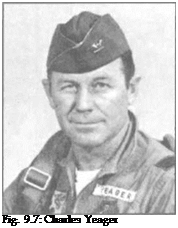 Every time a barrier is broken, a new challenge comes into focus. This time, the challenge revolved around the question, "Can anyone fly an aircraft non-stop around the world?"
Every time a barrier is broken, a new challenge comes into focus. This time, the challenge revolved around the question, "Can anyone fly an aircraft non-stop around the world?"











